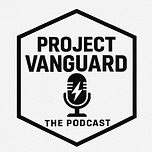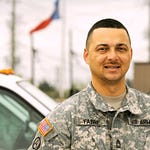Picture a 193 megawatt solar site with roughly 1,200 sheep on patrol. Each one needs three to seven gallons of water a day. If you treat that as free grazing, it fails. Treat it as a service with checklists, water logistics, and predator defense, it works.
My guest is Brad Quigley, an Army veteran who served nearly 26 years. He went from missile defense and aviation to ranch foreman in West Texas, and now runs Solar Ranch Experts, using sheep to manage vegetation on solar farms. We talk about the craft of agrivoltaics, the role veterans play in operations and project management, and how local community partners turn a site into an asset.
Agrivoltaics is vegetation management. When developers bring grazers in early, they save money, reduce headaches, and build community trust.
What Agrivoltaics Really Is
Agrivoltaics is not a side hustle under the panels. It is a contracted vegetation management service with standards, timelines, and site safety.
“It’s not free grazing. It’s a vegetation management service, and there’s a lot to it.” - Brad
Brad’s team uses sheep because they can reach under arrays, avoid damaging racking, and recycle nutrients right back into the soil. But the success or failure of a program comes down to ops discipline.
The First Site Survey
Before a single animal moves, a survey answers a few non-negotiables.
Vendor status and site access. It is a power plant. You do not just walk on.
Water, first. On a 193 MW site, Brad plans for about 1,200 sheep. At three to seven gallons per head per day, water drives the design.
Predator risk and fencing. Chain link keeps people out, not coyotes.
Guardian dogs and cameras. Deter, detect, respond.
Array layout and movement. Can you water and rotate the flock across multiple blocks without hauling from town.
“Where’s the water. That is number one.” - Brad
When city water or a well is available, costs drop and reliability rises. When it is not, the plan may not pencil at all. On some sites, Brad installs new taps, troughs, or predator skirts at the fence line to make the program viable.
Why Veterans Fit This Work
Veterans live in checklists, timelines, and standards. That maps to solar operations.
“Walking onto a solar site is like walking onto a missile defense site.” - Brad
Operations, project management, safety, logistics. The same muscles. Veterans bring the mindset to meet requirements, train teams, and execute. Many utilities figured this out years ago. More developers and asset owners are now catching up.
Developer Playbook: Bring Grazers In Early
Most grazers are called after COD, when the site is already built. Better results come when developers design for agrivoltaics in planning.
Choose fencing that keeps predators out and guardian dogs in.
Place water where sheep actually need it, not where a human wishes it was.
Plan lanes and gates for safe movement across arrays.
“Bring grazers in pre-design. It saves money and wins permits.”
Local partners matter. In San Angelo, the city’s economic development team connects developers to shepherds and helps align community expectations with project needs. The result is a site that works on paper and on the ground.
Community and Land Outcomes
Sheep manage vegetation without herbicides or heavy machinery and they spend money in town. Mineral, welding, fuel, lunches. Over a long contract, soil biology can improve, not degrade.
“We saw at least six new plant species after one rotation. The seed bank responded.” - Brad
That is the difference between extractive and regenerative. The land looks better at the end of the project than at the start.
A Pathway for Veterans
Brad’s company hires veterans and new farmer-ranchers, trains them on operations, then helps them launch.
“Our goal is to bring veterans and new farmer ranchers into agrivoltaics, teach them, then launch them.” - Brad
If you have ag experience, you have a head start. If you do not, you can still learn the work by joining a solar grazing outfit and moving up. Mentors and simple networking habits accelerate the curve.
“LinkedIn works. Meet in person when you can, then keep the conversation going.” - Brad
Agrivoltaics is simple to describe and hard to do well. That is why veterans belong here. It rewards discipline, planning, and teamwork. It respects the land and the community. It turns a siting challenge into a shared win.
Veterans: if operations is your lane, this is a real industry path you can build a family on.
Developers and asset owners: bring grazers in pre-design, plan for water and fencing, and work with local partners. You will get stronger projects and a better relationship with the community.
If this resonated, share it with a teammate, drop a comment with your experience, and subscribe to get the next conversation when it drops.











